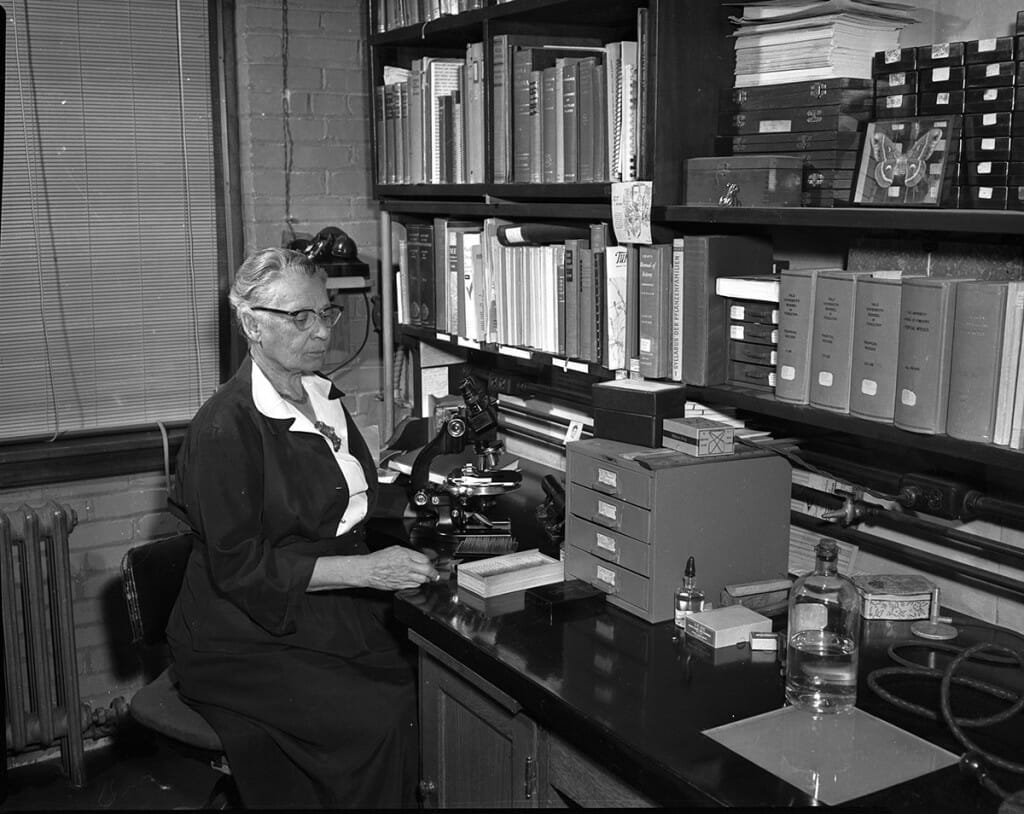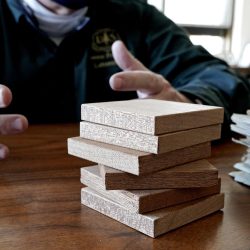Eloise Gerry

Researcher Eloise Gerry blazed a trail for female scientists during her four decades with the U.S. Forest Products Laboratory in Madison. Photo courtesy of USDA Forest Service, Forest Products Laboratory, Madison
I always knew my children would be smarter than me — I just didn’t expect it to start when my oldest daughter, Harper, was nine. For a fourth-grade living history unit, she chose to portray Eloise Gerry PhD’21 to a roomful of classmates and parents, including me, who had never heard of her.
Gerry, a Boston native, was the only female staff member of the U.S. Forest Products Laboratory when it opened in Madison in June 1910. The lab hired her because, as Gerry later remembered, “there wasn’t any man willing to come and do the work.”
She was a microscopist, and initially her job was to catalog the anatomical features of wood species that were sent to the lab. But in 1916, she initiated her own research into saving the pine tree population of the American South.
She traveled on horseback, in Ford Model Ts, and on foot through the woods of Alabama, Florida, Georgia, Louisiana, and Mississippi to collect samples. She studied them under her microscope and helped to restore businesses that were dependent on resin and turpentine by proving that lumberjacks were cutting too many of the area’s pine trees.
She insisted on signing her full first name to correspondence — breaking with the era’s tradition of using only a first initial after Dr. — so everyone would know she was a woman.
Gerry retired after 44 years with the laboratory, and years later, when she died, she left the majority of her estate to Graduate Women in Science, an international organization that has since given hundreds of thousands of dollars in fellowships to female scientists for research support.
Gerry is a personal hero to Michelle Booze, president of Graduate Women in Science and an embryologist at the Sanford Health Advanced Reproductive Laboratory. “Those who gave so much to the scientific community, and then gave above and beyond so that other women could follow in their footsteps just a little bit easier — it’s an amazing legacy to leave behind,” Booze says.
When Gerry retired, she told her colleagues, who by then included dozens of women, “Our work here opens a way to one of life’s great adventures as we constantly press on toward new and greater understanding.”
Published in the Spring 2018 issue



Comments
No comments posted yet.